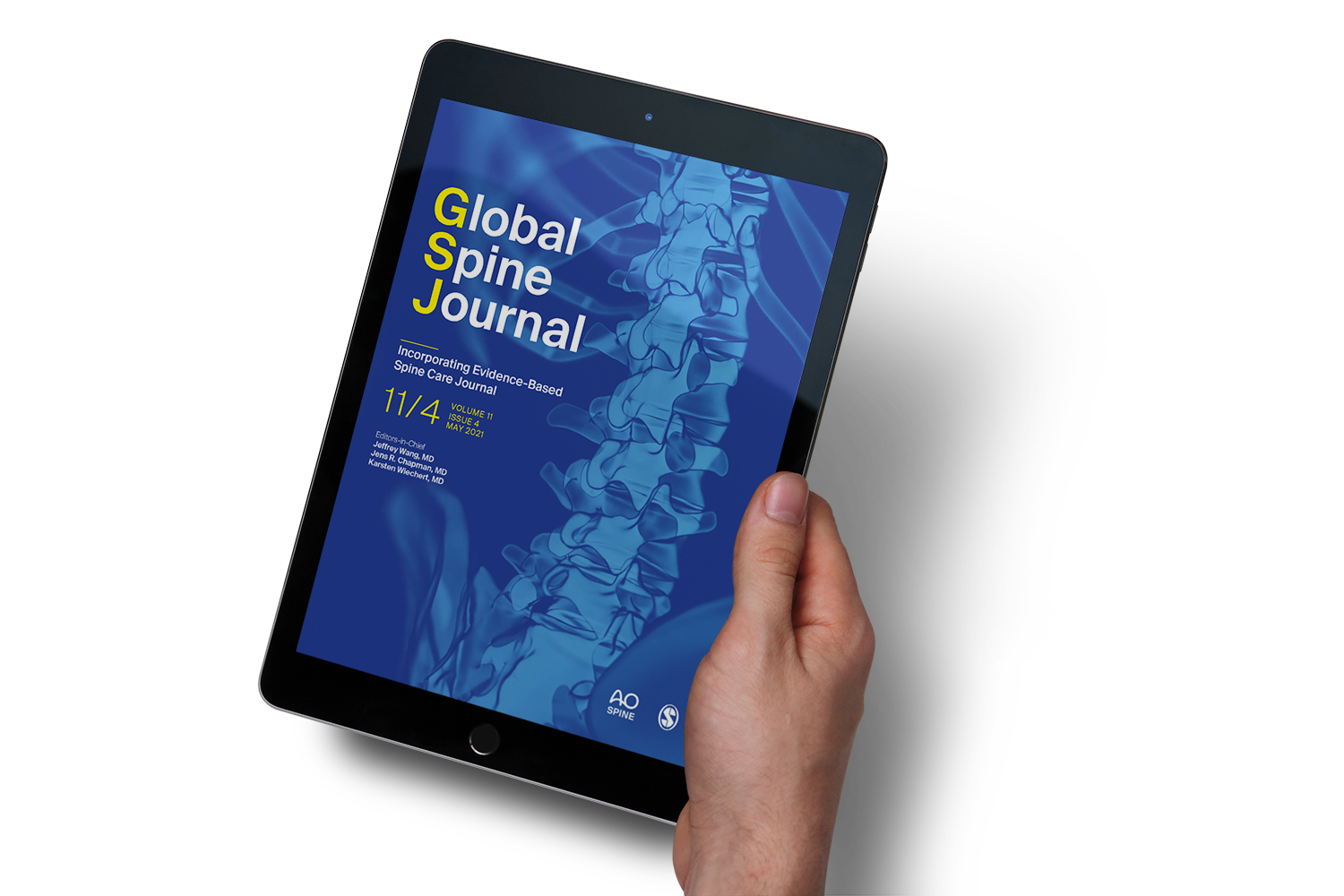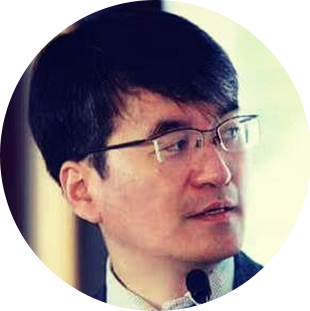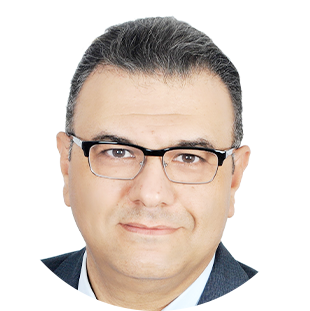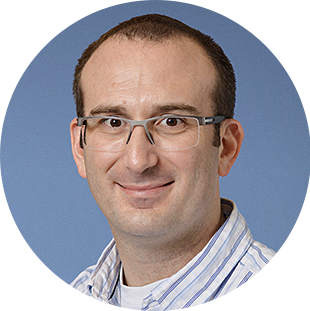

The Global Spine Journal (GSJ) Editorial Board keeps expanding as the journal continues to grow. Last year, GSJ received an impact factor which caused a huge surge in submissions. Due to the rapid development, the Editors-in-Chief have added more Deputy Editors to the Editorial board.
The GSJ Deputy Editors encompass all of the AO Spine regions. GSJ is a global and international journal with authors, readers, and reviewers from all over the world. The Deputy Editors represent this global diversity, and this allows for representation from every region.
GSJ’s Deputy Editors make up an important component of the Editorial Board. They review articles and provide feedback for the authors, they attend board meetings, they promote and represent GSJ at congresses and conferences, and they assist and vote in all major journal decisions and plans.
It is not an easy job, but it is an important one.
AO Spine invited the four newest official GSJ Deputy Editors to discuss their role in the journal. Luke Kim from Asia Pacific, Mohammad El-Sharkawi from the Middle East, Juan Emmerich from Latin America, and Evan Davies from Europe were previously active reviewers for GSJ. All expressed that it was an honor and a privilege to be chosen as Deputy Editor for the GSJ.




Kim: Being a deputy editor is what I dreamed of a long time ago when I became a board-certified neurosurgeon, and it is the happiest and most glorious thing in my academic career.
El-Sharkawi: I enjoy reviewing the many articles. Seeing the reviewers’ comments has also improved my knowledge, critical thinking, and ability to assess scientific literature.
Davies: Having been a reviewer for the journal previously, it was hopefully a validation of what I had done before. It is fascinating reading other reviewers’ peer-review and I enjoy helping the editorial board make the decisions on submissions.
Emmerich: Being nominated was a great honor since it means having the recognition of my peers. It is an honor to be able to contribute to improving the editorial work of GSJ. He has high expectations in the role because it is such a unique opportunity.
El-Sharkawi: I would like to support and pursue the efforts of the Editors-in-Chief to make GSJ the most sought-after journal, to manage the phenomenal increase in the number of submissions we receive each month, and to ensure that GSJ continues to grow with the goal of eventually becoming the number one spine journal in the world.
Davies: I want to ensure the peer-review process continues in a timely and efficient way. Due to COVID-19, the review process has slowed down, and the Deputy Editors are doing what they can to speed up the process.
Emmerich: The Latin American region is a restless region with surgeons with enormous capacity but a low scientific production, mostly because they do not have the right tools to carry out this task. As a Deputy Editor of GSJ as well as the Chair of AO Spine Latin America I have tried to develop the tools for the region, trying to bring forward the importance of sharing the results of research from the region.
El-Sharkawi: In the Middle East, most surgeons focus on their clinical practice and it leaves them little time to do research. This and the lack of suitable infrastructure has led to a low number of publications from the region. El-Sharkawi is also trying to work with AO Spine and AO PEER to help produce more quality publications from the Middle East.
Kim: Asia Pacific is a place where technology related to minimally invasive surgery and endoscopic surgery is very advanced, and because of this it is sometimes difficult for authors from Asia Pacific to be published in major journals in Europe and the United States. I encourage my colleagues in the region to submit a lot of MIS/Endoscopy papers to GSJ.
Davies has recognized the advantages of publishing from the European region, especially since GSJ publishes a lot from Europe. The global aspect of GSJ is the most important part of the journal’s name. It is important to have representation from every region and healthcare system in the journal.
All Deputy Editors stress that their goal during their tenure is for GSJ to become the premier journal for spine research in the world as it continues to develop and grow.
Davies: I would like GSJ to be a vehicle for high level research as it allows another avenue for AO Spine Society as a whole.
Emmerich: The opportunity to have guest papers and special supplements of enormous value to readers. One of my main motivations is to ensure that the journal can show the work of spinal surgeons around the world, since we can all learn from this diversity.
Kim: Open access is now becoming a huge global trend and many spine journals are following in GSJ’s footsteps. Many major journals have started to also create open access “sister” journals as well. GSJ has been the trailblazer for open access in the field of Spine.
El-Sharkawi: Open access publishing allows wider distribution of knowledge and has contributed to GSJ’s increase in citations. However, the most important part of publishing open access is that it does not discriminate between the rich and the poor. Everyone has the right to and the easy access to knowledge. This is for the benefit of mankind.
All the Deputy Editors commented that the number of articles being continuously published is enormous and it can be difficult to stay up to date with everything. Pick some of these insider tips and keep up to speed.
Davies concentrates on the core journals that publish the best content, and he considers GSJ a core journal. He uses search engines and gravitates towards open access journals especially since time is the most difficult commodity for surgeons, the ease of access to high quality papers is key.
Emmerich stays informed with three main strategies:
Kim uses Google Scholar and enters keywords of interest to check and read articles. He also checks articles from emails from journals as well as searching topics that are being presented at major academic events.
El-Sharkawi has found it has become virtually impossible to follow and read all published articles. He focuses on GSJ, but also is subscribed to most major spine journal so he checks the e-mail notifications from the latest issues with the table of contents. Then he reads the abstracts of the interesting articles and then digs into the papers that he finds most relevant to him.
If you would like to submit to GSJ, please go to https://journals.sagepub.com/author-instructions/GSJ
Follow GSJ on Social Media Twitter @globalspinej and Facebook.
Interested in reviewing for GSJ?
Email your CV and areas of expertise to the Managing Editor Danielle.lieberman@med.usc.edu.